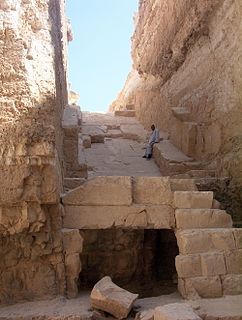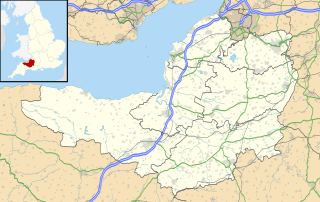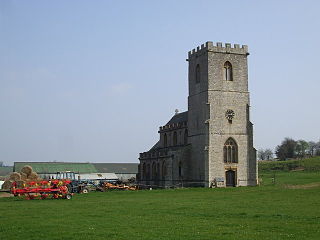| Site of Special Scientific Interest | |
| Area of Search | Avon |
|---|---|
| Grid reference | ST772573 |
| Coordinates | 51°18′52″N2°19′43″W / 51.31435°N 2.32852°W Coordinates: 51°18′52″N2°19′43″W / 51.31435°N 2.32852°W |
| Interest | Geological |
| Area | 0.4 hectares (0.0040 km2; 0.0015 sq mi) |
| Notification | 1971 |
| Natural England website | |
Hinton Charterhouse Pit (grid reference ST772573 ) is a 0.4 hectare geological Site of Special Scientific Interest near the village of Hinton Charterhouse, Bath and North East Somerset, notified in 1971.

The Ordnance Survey National Grid reference system is a system of geographic grid references used in Great Britain, distinct from latitude and longitude. It is often called British National Grid (BNG).
The hectare is an SI accepted metric system unit of area equal to a square with 100-metre sides, or 10,000 m2, and is primarily used in the measurement of land. There are 100 hectares in one square kilometre. An acre is about 0.405 hectare and one hectare contains about 2.47 acres.

Hinton Charterhouse is a small village and civil parish in the Bath and North East Somerset unitary authority, Somerset, England. The parish, which includes the village of Midford, has a population of 515.
The Hinton Sands, where a sparse bivalve fauna has been found, is an unusual sandy facies developed in the middle of the Forest Marble Jurassic Formation. This rock unit has strong associations with William Smith, who used the name Hinton Sands for the facies early in the 19th century. [1]
The Jurassic was a geologic period and system that spanned 56 million years from the end of the Triassic Period 201.3 million years ago (Mya) to the beginning of the Cretaceous Period 145 Mya. The Jurassic constitutes the middle period of the Mesozoic Era, also known as the Age of Reptiles. The start of the period was marked by the major Triassic–Jurassic extinction event. Two other extinction events occurred during the period: the Pliensbachian-Toarcian extinction in the Early Jurassic, and the Tithonian event at the end; however, neither event ranks among the "Big Five" mass extinctions.

William 'Strata' Smith was an English geologist, credited with creating the first nationwide geological map. At the time his map was first published he was overlooked by the scientific community; his relatively humble education and family connections prevented him from mixing easily in learned society. Financially ruined, Smith spent time in debtors' prison. It was only late in his life that Smith received recognition for his accomplishments, and became known as the "Father of English Geology".














